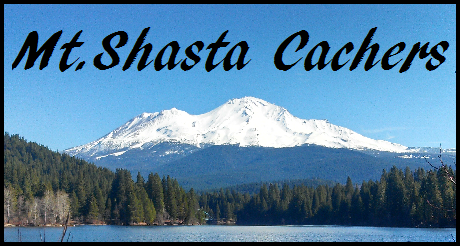Brandy Creek Falls Hiking Trail
One Way --->
Brandy Creek Falls Trail = 1.5 Miles, 500ft. Elevation
______________________________
Brandy Creek comes from the north face of Shasta Bally and flows into Whiskeytown Lake.
~ Creek Climate & Geology ~
Water drains, or 'runs off', to these areas under the force of gravity and pools. Where there are longer stretches of low land, water flows along, again under the force of gravity, until it is able to escape to even lower land — often through a gap in the landscape. Areas through which water can flow become eroded over time by that water, creating deeper and deeper channels. If the soil and rock is easily eroded this can occur very quickly. If the underlying material is very hard, it takes longer but still happens. The result is a river valley. Sometimes valleys are called ravines although ravines are usually either very shallow creek valleys or very short cuts in a slope — not long, winding creek paths. Because creeks have eroded through layers of soil and rock, they expose layers that are not visible elsewhere. It may be fine sand, silt or sticky clay.
Creeks are as subject to climatic effects as the land around them, but not in the same way. When there is a great deal of rain, creeks swell and run more quickly. If the rain is warm the creek temperature may temporarily rise but creeks rarely become permanently warm like ponds can. In times of low rainfall, some smaller creeks can dry up completely becoming dry creek beds for short periods of time. Some creeks are dry in the winter, especially if there has been little snow and few thaws to melt the snow which does exist. Dry creeks can also be the result of over-extraction of water for agricultural and greenhouse irrigation. Creeks that dry up from time to time are called 'ephemeral'.
~ Creek Habitat Types ~
There are two habitats associated with creeks: the aquatic habitat of the waterway itself and the land area along either side of the creek, which is often called the 'riparian' zone.
~ Aquatic Habitat: There are four kinds of zones in creeks.
-Riffles are shallow areas where piles of rocks and debris occur, making the water flow quickly over and through them.
-Pools are where the water flows more slowly through bends and side channels in the creek, or in the areas just downstream of riffles.
-Channels, water runs very quickly through areas that are straight and unblocked.
-Near-shore area where flow is slower and there may be fallen logs and other debris.
The appearance of these zones may be dramatically different from season to season and not all creeks have all of these zones. One of the challenges for creatures living in creek habitats is the changeable environment, with the water getting deeper and swifter in the spring when there is snow melting and rain falling, and getting shallow and slow in the heat of the summer. Autumn also brings rains that make creeks run higher while in winter many creeks are full of ice and have very little flow at all.
~ Riparian Zone: Often resembles a forested landscape, but near the water's edge the species of trees, shrubs, herbaceous plants and even animals often differ from the forest around them. These riparian zones are where animals that eat fish and aquatic insects come to feed. The soil that is near the creek edge is much wetter than the higher forest soils nearby. Plants that do well in normal forest soils often are not adapted to these wet conditions but there are species that are well suited to exactly this kind of habitat, like willows (Salix spp.) and some other water-tolerant shrub species. In very wet areas, where the water does not flow very quickly, wetlands often form along creek edges, forming an entirely different habitat between the creek and the forest. Typically these are marshes but some creeks also run through peat lands.
Email Me The Answers To These Questions Before You Log Your Find. If you do not email me the answers your log Will Be Deleted.
1) How many large pools have the creek formed near this location?
2) The creek has eroded the soft soil to form how many visable levels near here?
3) When crossing the large wooden bridge, look down. What kind of creek zone is here?
4) Looking into each of the pools centers. What does the soil at the bottom look like?
A. Clay & Debris
B. Sand & Pebbles
C. Pebbles & Rocks
___________________________
*Please Do Not Post Your Answers*
~ PARKING: There are parking fees for the NRA and they are listed below.
***All vehicles are now required to display a use pass. Whiskeytown day use pass costs $5.00, weekly use pass costs $10, annual pass costs $25. The following passes are accepted in lieu of a Whiskeytown pass: Lassen Volcanic Annual Pass, Golden Age and Access Passports, America the Beautiful Annual, Senior and Access Passes. Pass must be displayed on dashboard of vehicle.
~ Text & Information was used from this source.
